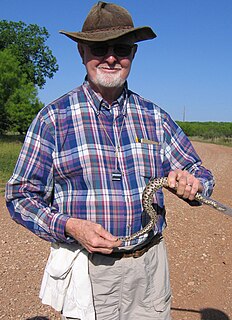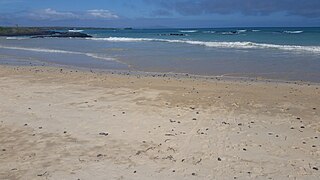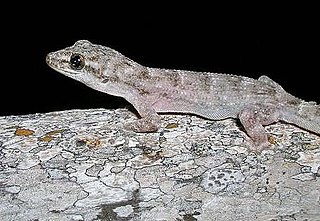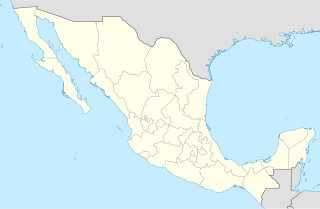
Phyllodactylus is a genus of geckos distributed in South America and Central America, and as far north as the southern United States. They are commonly known as "leaf-toed geckos" in their native range, and otherwise as American leaf-toed geckos to distinguish them from unrelated genera with similar feet.
The western leaf-toed gecko is a species of gecko. It is endemic to Peru. It was described by Johann Jakob von Tschudi in 1845.

The narrow leaf-toed gecko is a medium-sized gecko with a maximum snout-vent length of 57 mm.

Phyllodactylus xanti is a species of lizard in the family Phyllodactylidae. It is endemic to northwestern Mexico. It is also known as the leaf-toed gecko or Raza Island leaf-toed gecko when referring to the subspecies from the Raza Island; at present, there are altogether four recognized subspecies, while several more have been recognized previously.

James Ray Dixon was professor emeritus and curator emeritus of amphibians and reptiles at the Texas Cooperative Wildlife Collection at Texas A&M University. He lived in El Campo, Texas throughout most of his childhood. He published prolifically on the subject of herpetology in his distinguished career, authoring and co-authoring several books, book chapters, and numerous peer reviewed notes and articles, describing two new genera, and many new species, earning him a reputation as one of the most prominent herpetologists of his generation. His main research focus was morphology based systematics of amphibians and reptiles worldwide with emphasis on Texas, US, Mexico, Central America, and South America, although bibliographies, conservation, ecology, life history and zoogeography have all been the subjects of his extensive publications.

Santa Fe Island, also called Barrington Island after admiral Samuel Barrington, is a small island of 24 square kilometres (9.3 sq mi) which lies in the centre of the Galápagos archipelago, to the south-east of Santa Cruz Island. Visitor access is by a wet landing in Barrington Bay on the north-eastern side of the island.

The coastal leaf-toed gecko or Tumbesian leaf-toed gecko is a species of lizard in the family Phyllodactylidae. The species is endemic to South America.
The Lima leaf-toed gecko has been registered in six archeological sites in Lima, Peru, where it is endemic. It is considered a species in critical danger.

The peninsula leaf-toed gecko is a medium-sized gecko. It is found in southern California (USA) and Baja California (Mexico), including many islands in Gulf of California as well as Islas Magdalena and Santa Margarita off the west coast of Baja California.

Isla Santa Cruz, is an island in the Gulf of California, east of the Baja California Peninsula in Baja California Sur state.
Dagasuchus is an extinct genus of pseudosuchian archosaur from the Late Triassic (Carnian) of Rio Grande do Sul, Brazil, represented by the type species Dagasuchus santacruzensis. D. santacruzensis was named in 2015 on the basis of a partial hip found in an exposure of the Santa Maria Formation in the Paraná Basin, near the city of Santa Cruz do Sul. Dagausuchus is an early member of a large evolutionary group called Loricata, which originated in the Triassic and includes modern crocodylians and their ancestors. Features of its hip closely resemble those of other early loricatans such as Stagonosuchus and Saurosuchus. Dagasuchus is notable for being the first loricatan found in the Santacruzodon assemblage zone of the Santa Maria Formation; previously loricatans were only known from the older Dinodontosaurus assemblage zone and the younger Hyperodapedon assemblage zone within the Santa Maria Formation, meaning that Dagasuchus fills in a gap in the fossil record of the group.
The Barrington leaf-toed gecko is a species of lizard in the family Phyllodactylidae. The species is endemic to Santa Fe Island in the Galapagos.

The Guerreran leaf-toed gecko, also known commonly as the desert leaf-toed gecko and the salamanquesa de Guerrero in Spanish, is a species of lizard in the family Phyllodactylidae. The species is endemic to Mexico.
The Catalina Island leaf-toed gecko is a species of gecko. It is endemic to Isla Santa Catalina in Gulf of California, Mexico.
The Rio Huancabamba leaf-toed gecko is a species of lizard in the family Phyllodactylidae. The species is endemic to Peru.
Phyllodactylus leei, also known as the San Cristóbal Island leaf-toed gecko or Chatham leaf-toed gecko, is a species of gecko. It is endemic to San Cristóbal Island in the Galapagos Islands.
Phyllodactylus papenfussi is a species of gecko, a lizard in the family Phyllodactylidae. The species is endemic to Mexico.
The Rio Marquez Valley gecko is a species of gecko. It is endemic to Mexico.
Phyllodactylus thompsoni is a species of gecko, a lizard in the family Phyllodactylidae. The species is endemic to Peru.

The San Lucan gecko is a species of gecko. It is endemic to Mexico.








